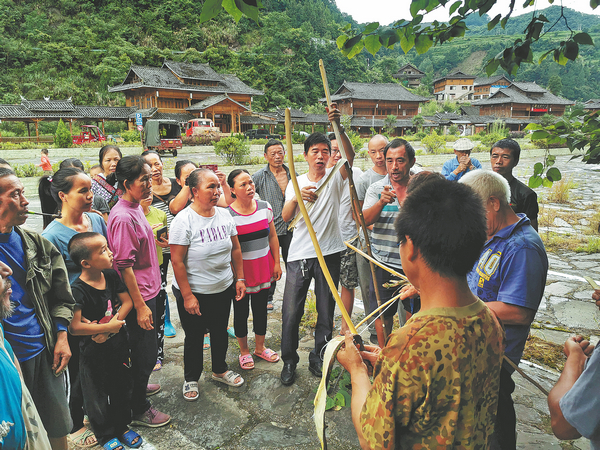

"I was once making paper in a cave, and then a leaf wafted onto it and got stuck," he recalls.
"Then, it hit me. The paper could be a piece of art if I integrated grass and flowers."
Through trial and error, Wang managed to perfect his method and his novel product has found an appeal among the younger generation.
Wang will walk visitors through the papermaking process.
Compared with conventional paper, making flower and grass paper is more complex.
"When picking flowers, you need to be careful and keep them intact," he says.
The first step in making huacao paper is to flatten flowers and leaves and place them on top of the pulp, Wang says.
"Once they are flattened, we use them to create the design before we add another layer of pulp," he says, adding that, this way, the color of the plants will also be retained.
Then, it will be left to air-dry for a while, before heat is applied to temper the paper.
"The final work reflects a noticeable concavo-convex texture, with an inconsistent, tactile feel. When used as the exterior cover of a notebook, for example, it looks particularly beautiful," Wang says.
Many locals have since taken advantage of Wang's ingenious idea, and use visitors' curiosity in the paper to earn extra income.
Shiqiao lies below a towering bridge upon which countless cars race by every day.
Yet, time seems to slow down in the village, as many locals, who are mostly ethnic Miao, take their time to meticulously turn tree bark into handmade sheets of white paper, using old-fashioned methods and unpolluted spring water from the nearby mountains.
This traditional technique was listed as a national intangible cultural heritage in 2006.